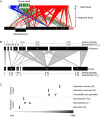Integrating network ecology with applied conservation: a synthesis and guide to implementation
- PMID: 26162897
- PMCID: PMC4564002
- DOI: 10.1093/aobpla/plv076
Integrating network ecology with applied conservation: a synthesis and guide to implementation
Abstract
Ecological networks are a useful tool to study the complexity of biotic interactions at a community level. Advances in the understanding of network patterns encourage the application of a network approach in other disciplines than theoretical ecology, such as biodiversity conservation. So far, however, practical applications have been meagre. Here we present a framework for network analysis to be harnessed to advance conservation management by using plant-pollinator networks and islands as model systems. Conservation practitioners require indicators to monitor and assess management effectiveness and validate overall conservation goals. By distinguishing between two network attributes, the 'diversity' and 'distribution' of interactions, on three hierarchical levels (species, guild/group and network) we identify seven quantitative metrics to describe changes in network patterns that have implications for conservation. Diversity metrics are partner diversity, vulnerability/generality, interaction diversity and interaction evenness, and distribution metrics are the specialization indices d' and [Formula: see text] and modularity. Distribution metrics account for sampling bias and may therefore be suitable indicators to detect human-induced changes to plant-pollinator communities, thus indirectly assessing the structural and functional robustness and integrity of ecosystems. We propose an implementation pathway that outlines the stages that are required to successfully embed a network approach in biodiversity conservation. Most importantly, only if conservation action and study design are aligned by practitioners and ecologists through joint experiments, are the findings of a conservation network approach equally beneficial for advancing adaptive management and ecological network theory. We list potential obstacles to the framework, highlight the shortfall in empirical, mostly experimental, network data and discuss possible solutions.
Keywords: Adaptive management; biodiversity conservation; ecological integrity; ecosystem functions; indicators; interaction networks; islands; pollination.
Published by Oxford University Press on behalf of the Annals of Botany Company.
Figures


References
LinkOut - more resources
Full Text Sources
Other Literature Sources

